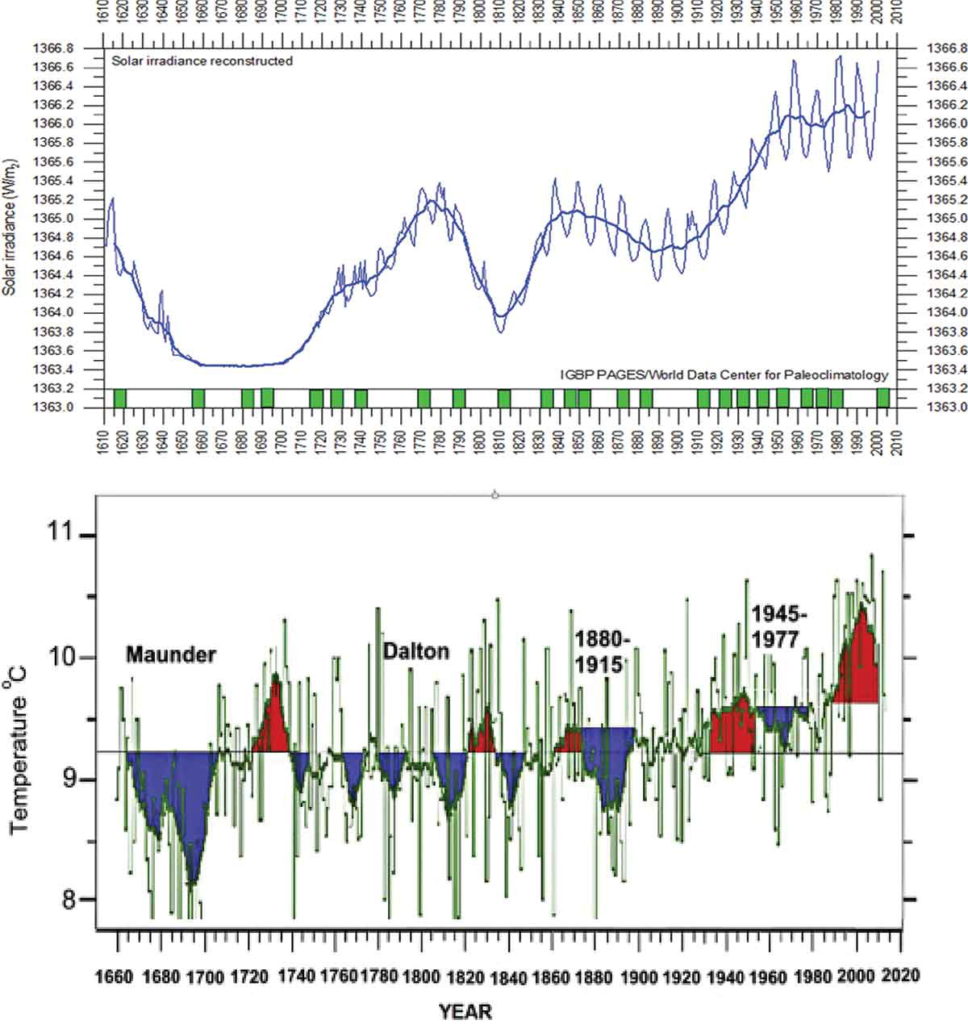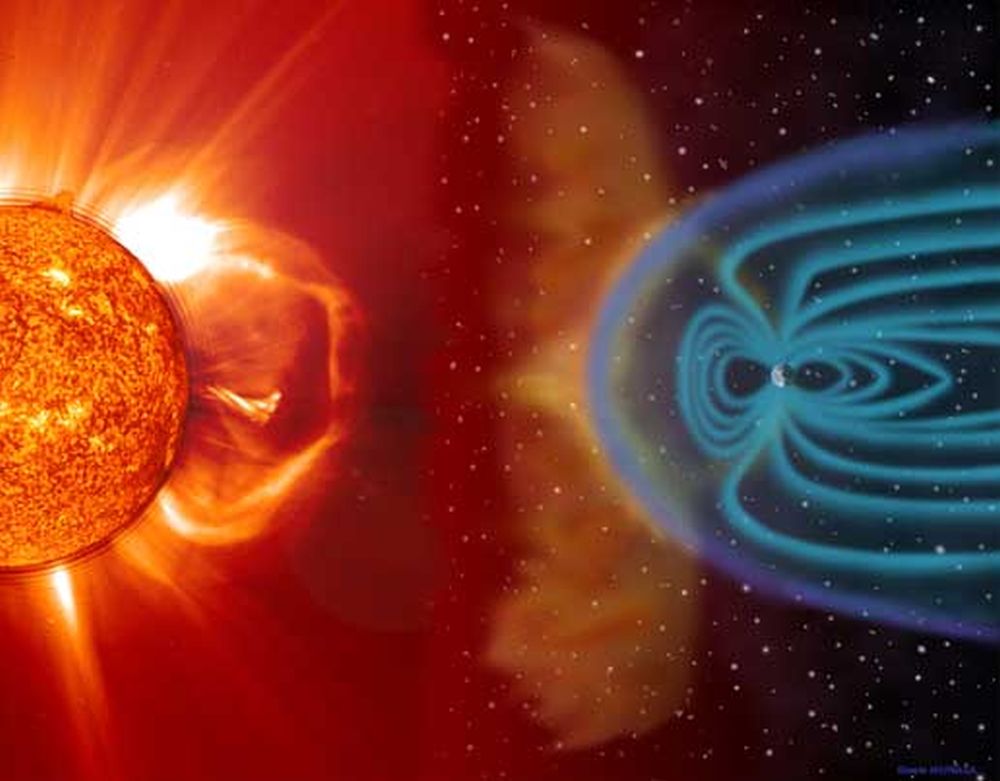New Op-Ed by Russian solar physicist Zharkova gives updates on why she thinks we are entering a new ‘Maunder Minimum’ and could see massive global cooling.
The reduction of a terrestrial temperature during the next 30 years can have important implications for different parts of the planet on growing vegetation, agriculture, food supplies, and heating needs in both Northern and Southern hemispheres. This global cooling during the upcoming grand solar minimum 1 (2020–2053) can offset for three decades any signs of global warming and would require inter-government efforts to tackle problems with heat and food supplies for the whole population of the Earth.
Apparently a 2019 paper of hers was retracted over some obscure question of where the solar system barycenter is located, and now she claims she has verified the data that was at issue.
In theory, a Maunder Minimum — visualize ice-skaters on the Thames, global crop failures — doesn’t necessarily cancel out the GHG-driven global warming, but could reduce its full impact, or maybe add conflicting dynamics…?
Mainstream climate change science has generally downplayed shifts in solar output (“irradiance”), arguing the data says such changes make up a microscopic percentage of energy input to the Earth, like, less than 1%.
Yet a growing crowd of “Space Weather” researchers (and non-credentialed enthusiasts, such as the guys at the entertaining but often over-dramatized SuspiciousObservers or the more technical and totally “Denialist” TallBlokeTalkshop) are saying there is much more to it than that, and very slowly, space weather dynamics — Earth/Sun magnetic interactions, high ionosophere activity, effect of charged cosmic particles on clouds — a few of many, for example — are being incorporated into some reports (possibly an expanded chapter in the next IPCC report, check out this NOAA division).
Of course, so-called “Climate-Deniers” are expecting this projected Solar Minimum to fully negate the temperature stats that consensus science relies on to validate the CO2-driven warming model.
Unfortunately, this contrarian crowd seems to be as emotionally fixated on their “Global Icecicle Apocalypse” as the AGW activist crowd is on their “Baking Planet Model”. Problem is, there are so many different dynamics at work, and so many uncertainties in historical baselines, projections, and chaotic interactions.
Time will tell…

Role of magnetic field in terrestrial cooling in Grand Solar Minima
However, not only solar radiation was changed during Maunder minimum. There is another contributor to the reduction of terrestrial temperature during Maunder minimum – this is the solar background magnetic field, whose role has been overlooked so far. After the discovery [1] of a significant reduction of magnetic field in the upcoming modern grand solar minimum and during Maunder minimum, the solar magnetic field was recognized to control the level of cosmic rays reaching planetary atmospheres of the solar system, including the Earth. A significant reduction of the solar magnetic field during grand solar minima will undoubtedly lead to the increase of intensity of galactic and extra-galactic cosmic rays, which, in turn, lead to a formation of high clouds in the terrestrial atmospheres and assist to atmospheric cooling as shown by Svensmark et al. [5].
In the previous solar minimum between cycles 23 and 24, the cosmic ray intensity increased by 19%. Currently, solar magnetic field predicted in Figure 1 by Zharkova et al. [1] is radically dropping in the sun that, in turn, leads to a sharp decline in the sun’s interplanetary magnetic field down to only 4 nanoTesla (nT) from typical values of 6 to 8 nT. This decrease of interplanetary magnetic field naturally leads to a significant increase of the intensity of cosmic rays passing to the planet’s atmospheres as reported by the recent space missions [6]. Hence, this process of solar magnetic field reduction is progressing as predicted by Zharkova et al. [1], and its contribution will be absorbed by the planetary atmospheres including Earth. This can decrease the terrestrial temperature during the modern grand solar minimum that has already started in 2020.
….
During these grand solar minima, there is a significant reduction of solar magnetic field and solar irradiance, which impose the reduction of terrestrial temperatures derived for these periods from the analysis of terrestrial biomass during the past 12,000 or more years. The most recent grand solar minimum occurred during Maunder Minimum (1645–1710), which led to reduction of solar irradiance by 0.22% from the modern one and a decrease of the average terrestrial temperature by 1.0–1.5°C.
This discovery of double dynamo action in the Sun brought us a timely warning about the upcoming grand solar minimum 1, when solar magnetic field and its magnetic activity will be reduced by 70%. This period has started in the Sun in 2020 and will last until 2053. During this modern grand minimum, one would expect to see a reduction of the average terrestrial temperature by up to 1.0°C, especially, during the periods of solar minima between the cycles 25–26 and 26–27, e.g. in the decade 2031–2043.
https://www.tandfonline.com/doi/full/10.1080/23328940.2020.1796243




